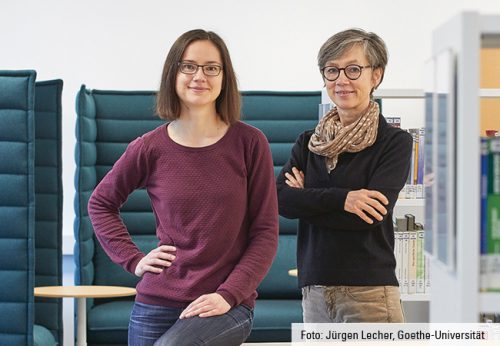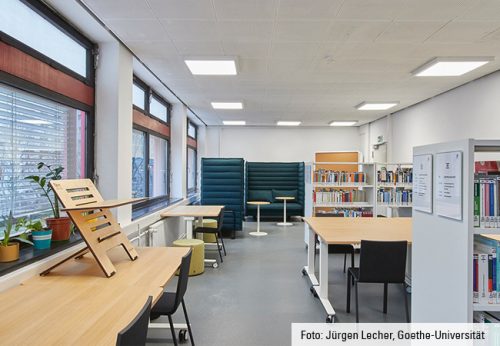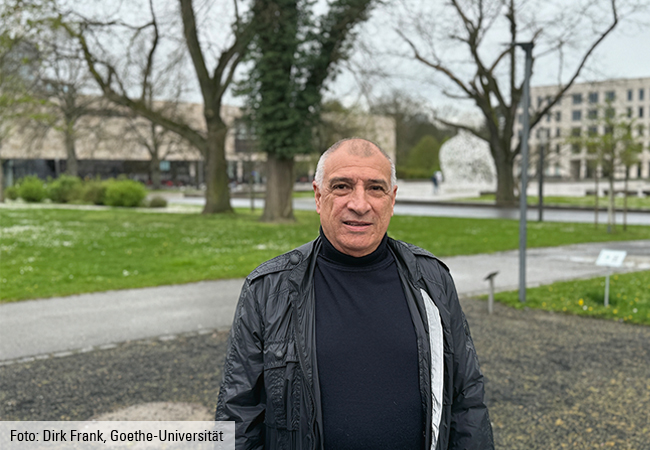The small Sports Sciences Library on Goethe University Frankfurt’s Ginnheim Campus has undergone a renovation. Both the Institute of Sports Sciences and the students were involved in the planning.

Anyone new to Ginnheim Sports Campus may have difficulty finding the library straight away, considering its somewhat hidden location on the third floor of the administration building. Formerly the library of the Department of Sports Sciences, it is one of the smaller outposts of the Frankfurt University Library (UB). Although the long room lined with windows is not too large, its light and airy atmosphere leaves visitors surprised. “Prior to the renovation, the sports library wasn’t particularly inviting,” says Anette Müller, director of the Library of Social Sciences and Psychology (BSP), who also oversees the Library of Sports Sciences. “Before this revamp, the library’s use was not very practical, neither for the library staff nor for visitors. The shelves reached all the way to the ceiling, which made the room look very full.” In 2020, during the pandemic, Daniela Poth, the new University Library director, provided the impetus for a more functional and user-friendly concept for the sports library. The basic idea? To involve the institute and the students as much as possible.

The first phase included a workshop, during with the faculty’s requirements were discussed. Did users want a library with open or closed access? How many workstations would be needed, which books and media should it hold? “Focusing on frequently used and essential media allowed us to install lower, half-height shelves, which give the room a more open feel,” Müller explains. Books that are consulted more rarely were moved to the BSP on Westend Campus, where they remain available for loan.
Once the basics had been defined, the renovation work moved into its next phase, during which the users were involved in choosing the fixtures and fittings. What kind of furniture and shelves did they want? Did they prefer bright colors or more muted shades? Although not everyone’s wishes could be realized, the students were actively involved in the design process – the result of which is a light and unified color scheme. “Many people did not want to be distracted while reading and thinking,” Julia Gildenstern reports. Those who prefer a brighter color can visit the Café Hochform on the building’s first floor, whose dominant color is bright green.

Sports science comprises several disciplines with different prevailing types of publications. Whereas more articles tend to be published and many e-books are popular in sports medicine, in sports education, on the other hand, there are still many printed publications describing and illustrating exercises and trainings, for example, often also using pictures. Publishing houses rarely produce e-books with this sort of content. In the long term, the stock of print media is expected to remain more or less the same as today. “We regularly look at the borrowing statistics so we can offer literature that is up-to-date, required and well used,” Gildenstern explains.
So far, the mix of traditional workstations and quiet zones has proven quite popular, Müller and Gildenstern agree. The sound-absorbing sofas and armchairs give users the option of withdrawing to a quiet zone, or holding conversations without disturbing others. “Acoustics are known to be a major problem in many libraries – here we’ve found a flexible and mobile solution using the new seating units.” Anyone wanting to strengthen their back muscles while reading will appreciate the ball seats.
The Sports Sciences library is open Monday to Friday from 11 a.m. to 3 p.m. Clearly, these opening hours are nowhere near those of the UB’s larger sites, which naturally has to do with staffing resources. But there are plans for potentially testing a more innovative and flexible operating concept at the Ginnheim site in the long term. “We’re working hard on that right now,” says Müller.
Photos: Jürgen Lecher













